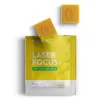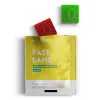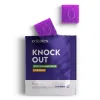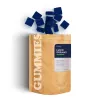Weighted blankets have surged in popularity in recent years, and it’s not hard to see why. A cozy, inviting bed is, or at least should be, a staple in every bedroom. The warm embrace of a soft blanket, the comforting feeling of a delicious mattress… makes you sleepy to just think about, no?
A core staple of these cloud-like beds is often a weighted blanket, especially for individuals living in colder climates or those dealing with sleep difficulties, such as insomnia, as well as individuals with sensory-processing disorders.
But what makes weighted blankets so great? Scientifically speaking, weighted blankets employ deep pressure stimulation, which is thought to encourage the production of a mood-boosting hormone (serotonin), reduce production of stress hormones (cortisol), and increase levels of melatonin, the hormone that makes us sleepy.
In warmer words, weighted blankets are the adult equivalent to a baby swaddle blanket. They calm the nervous system by applying gentle pressure throughout the body, relaxing us and making us feel safe and calm.
To Buy or DIY?
The weighted blanket market is effectively booming. In fact, the market for these soft and cozy blankets averaged $399 million dollars in 2019, and is expected to reach $2254.32 by 2031. But they might not be for everyone, even those looking into weighted blankets.
You can always buy a weighted blanket, but their costs can range anywhere between $35 and over $350.
While commercial weighted blankets can be expensive, the DIY option provides an affordable alternative that allows you to tailor the blanket's size and weight to your specific needs.
Crafting your own weighted blanket brings a multitude of benefits. First and foremost, it grants you the ability to customize the blanket to match your preferences precisely. You can select the fabric, design, and weight that best suits your comfort and style.
Additionally, creating a weighted blanket can be a rewarding and creative project, making it a perfect choice for those who enjoy sewing and crafting. By making your own weighted blanket, you not only save money but also gain a sense of accomplishment and satisfaction from the finished product.
Safety should always be a top priority when using weighted blankets. These blankets should not be used for children under the age of three due to the small stuffing beads used as fillers. Even for adults, it is essential to regularly inspect the blanket's seams to prevent any beads from escaping.
Additionally, it's crucial to ensure that the weight of the blanket is appropriate for the individual using it. Occupational therapists can help determine the right weight based on a person's body weight. By adhering to these safety considerations, you can enjoy the benefits of a weighted blanket without any concerns.
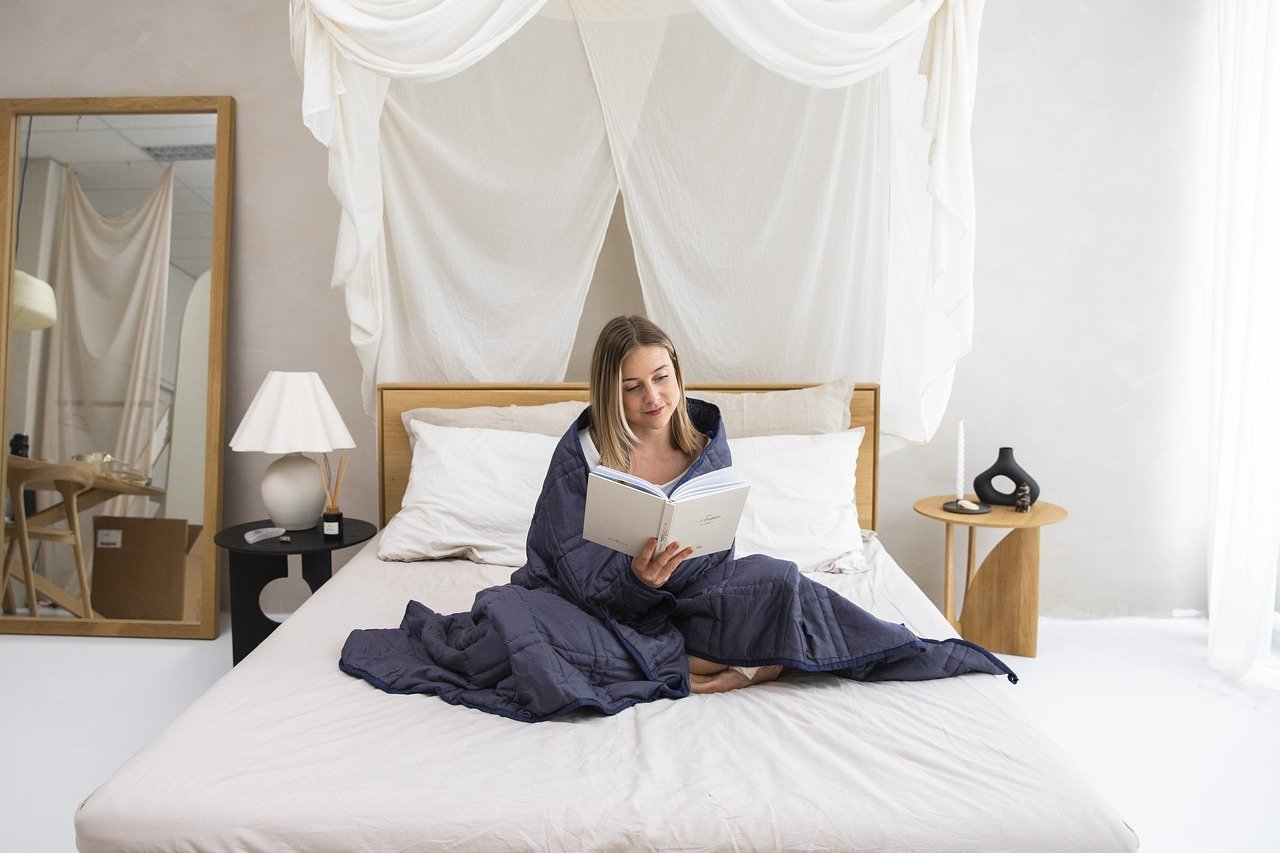
What Is a Weighted Blanket?
A weighted blanket is a therapeutic blanket designed to provide gentle, evenly distributed pressure across the body when used. These blankets are typically filled with materials such as plastic pellets, glass beads, or similar substances to increase their weight.
The primary purpose of a weighted blanket is to offer deep pressure stimulation (DPS), which can have a calming and soothing effect on the nervous system. Weighted blankets are often used to help individuals with various conditions, including anxiety, sensory-processing disorders, insomnia, and restless leg syndrome, achieve a sense of comfort and relaxation.
Weighted blankets work through a principle known as deep pressure stimulation. The added weight from the blanket applies a firm yet gentle pressure to the body, similar to the sensation of a comforting hug or swaddling.
This pressure is thought to trigger the release of neurotransmitters like serotonin and dopamine, which are associated with feelings of well-being and relaxation. The pressure also helps reduce the body's production of cortisol, a stress hormone.
Overall, this sensory input can promote a sense of calmness and reduce anxiety, making it easier for some individuals to fall asleep or manage stress.
The Importance of the Right Weighted Blanket
While weighted blankets can be highly beneficial for many people, there are some warnings and contraindications to consider. These blankets are not suitable for infants and young children under the age of three due to the risk of choking on the small filling materials.
It's important to choose an appropriate weight for the blanket; it should generally be around 10% of the individual's body weight, although this may vary based on personal preference and professional recommendations.
Individuals with certain medical conditions, such as respiratory issues or claustrophobia, should use weighted blankets with caution or consult a healthcare provider before using them.
Additionally, regular inspection of the blanket's seams and overall safety should be practiced to prevent any potential hazards or discomfort while using a weighted blanket.
Materials & Tools
When making a weighted blanket, you have various fabric options to choose from, depending on your preferences and needs. Common fabric choices include cotton, fleece, flannel, microfiber, and minky fabric.
Cotton is a popular choice for its breathability and durability, while fleece and flannel offer warmth and coziness. Microfiber is soft and often used for its smooth texture, while minky fabric is known for its plush and luxurious feel.
The choice of fabric can impact the blanket's overall comfort and aesthetic.
Weighted blankets require fillers to provide the desired weight. There are different types of filler materials available, including:
-
Plastic beads: Small plastic pellets are a common choice due to their weight and ease of use. They are also typically machine washable, making the blanket easier to maintain.
-
Micro glass beads: These tiny glass beads provide weight and are often chosen for their smooth texture and ability to distribute weight evenly. They are also suitable for machine washing.
-
Grains: Some DIY enthusiasts opt for natural fillers like rice, beans, or plastic poly pellets. While grains are natural, they may not distribute weight as evenly as other materials, and they cannot be washed.
Batting is a material used for cushioning in the blanket, providing additional comfort and insulation. While it's not always necessary, some individuals prefer the added softness that batting can provide. Common types of batting include cotton, polyester, and blends.
The choice of batting can affect the overall feel and weight distribution of the blanket.
Sewing supplies are essential for creating a weighted blanket. These include a sewing machine, quality thread that matches your fabric, pins to hold fabric layers together, scissors for cutting fabric and thread, and a measuring tape for ensuring accurate dimensions.
Having a ruler and tailor's chalk or a marking tool can also help you measure and mark the fabric accurately. Additionally, a kitchen scale can be useful for measuring the filler material and ensuring you achieve the desired weight for the blanket.
Needed Materials
-
Fabric
-
Fill
-
Batting
-
Thread
-
Sewing machine
-
Pins
-
Scissors
Optional Materials
-
Ruler
-
Tailor’s chalk
-
Kitchen scale
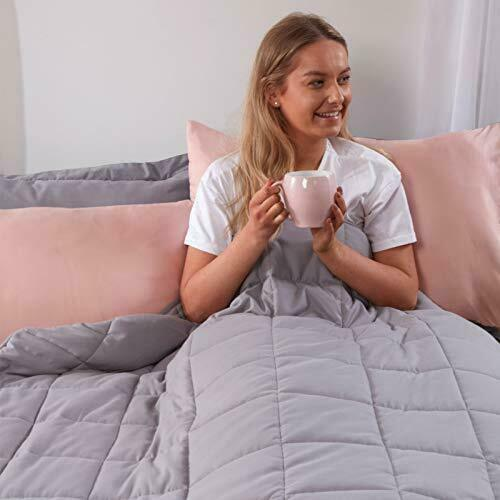
Instructions for Making a Weighted Blanket
Before you actually start making a weighted blanket, there are a few things to determine regarding the specifications and qualities you want in your blanket. Let’s explore some of these considerations.
Determine the Desired Weight of the Blanket
Follow the general weight recommendation, which suggests that a weighted blanket should be approximately 10% of the user's body weight. Consult with a healthcare provider or occupational therapist if you are making the blanket for specific therapeutic purposes.
Decide on the Dimensions of the Blanket
Determine the size of the blanket you want to create. The dimensions should cover the user comfortably. Ensure that the fabric measurements are a multiple of the square size you plan to use plus an additional 4 inches for the edges.
The Step-by-Step Instructions
1. Gather All Necessary Materials and Tools
Collect the fabric for the front and back, weighted filler material (such as plastic beads or glass beads), quality thread, sewing machine, pins, scissors, measuring tape, tailor's chalk or marking tool, and any additional materials like batting or fabric bags for the filler.
2. Sew the Front and Back Fabric Pieces Together
-
Place the front and back fabric pieces with the right sides together.
-
Leave the top open.
-
Sew the two long sides and one short side together with a 3/8-inch seam allowance.
-
Turn the blanket right side out and open the seams.
-
Topstitch 1/4 inch from the edge, starting and ending a short distance from the open side.
-
Starting 2 inches from the open side, sew along the marked lines that were 2 inches from the fabric edge. Sew the two long sides and the bottom, backstitching at the beginning and end to secure the inner topstitching.
Create Vertical Columns in the Blanket
Mark a grid of squares on the fabric based on the square size you've chosen. These squares will hold the weighted filler.
Calculate and Distribute the Weighted Filler Material
-
Calculate the amount of filler material needed for each square by dividing the total desired weight of the blanket by the number of squares. Typically, each square should have about 1 ounce of filler.
-
Use fabric bags or pouches to hold the weighted filler material for added security.
Sew Horizontal Lines to Enclose the Weighted Squares
-
Place pins along the marked horizontal lines to keep the filler beads in place and away from the marked lines.
-
Sew along the marked horizontal lines, starting just over the line of stitching that's almost 2 inches from the inner topstitching.
-
End the stitching just over the inner topstitching on the other side, backstitching at the beginning and end.
Inspect the Blanket for Any Loose Seams or Issues
Carefully check the blanket for any loose seams or areas where filler material might escape. Ensure all seams are secure.
Topstitch the Open End of the Blanket for Reinforcement
Fold the edges of the open side in about 1/2 inch and topstitch 1/4 inch from the edge, starting and ending where the topstitching ended on the sides. This step reinforces the open end of the blanket.
Remember to work carefully and safely while sewing your weighted blanket, paying attention to the guidelines and safety considerations mentioned earlier in the instructions.
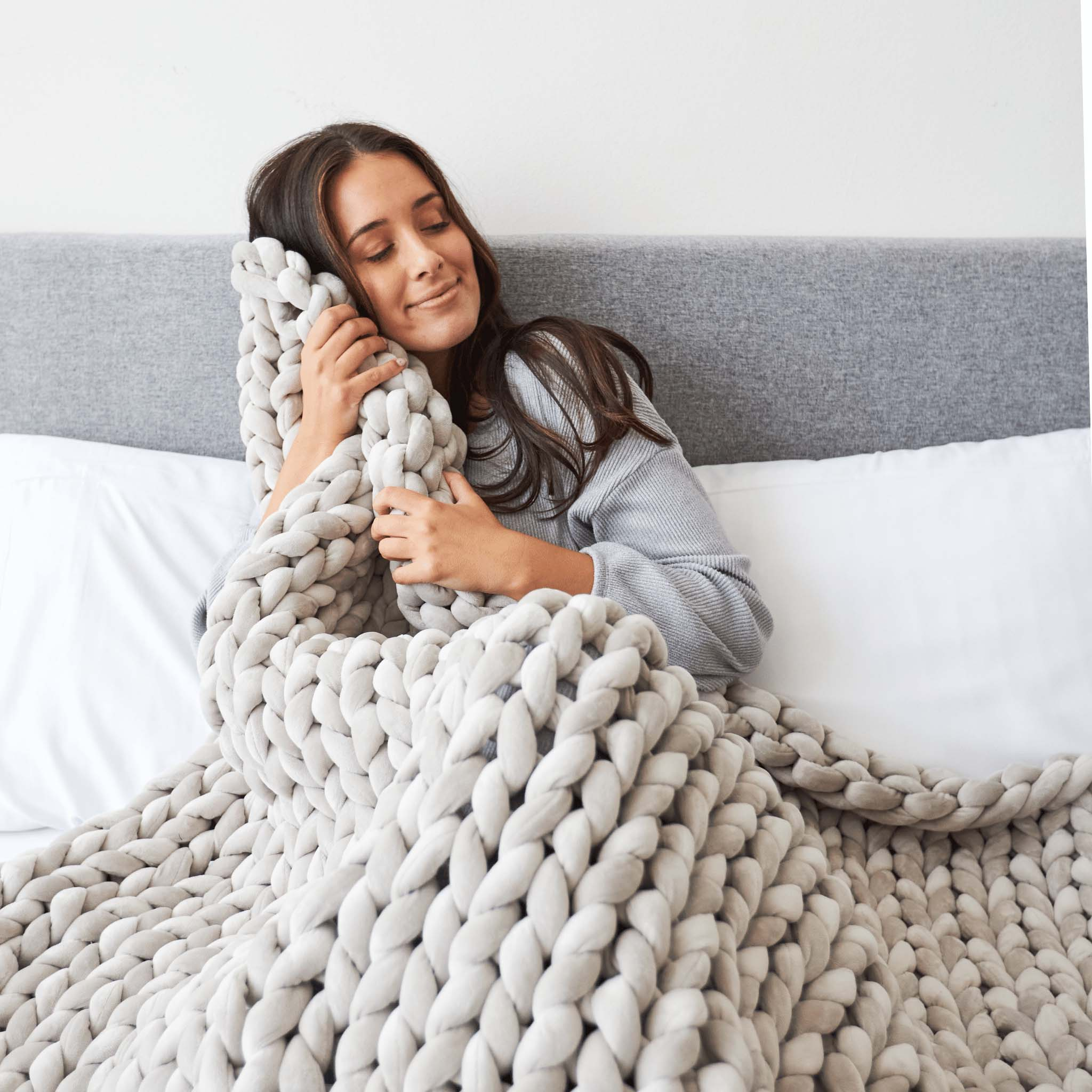
Pros & Cons of Making Your Own Weighted Blanket
|
Aspect |
Pros |
Cons |
|---|---|---|
|
Costs |
|
|
|
Personalization |
|
|
|
Durability |
|
|
The Availability of Pre-made Weighted Blankets for Non-DIYers
For individuals who lack the time, sewing skills, or inclination to make their own weighted blanket, there's a convenient option to purchase pre-made weighted blankets from various retailers.
These blankets are readily available in a range of sizes and styles, providing a hassle-free solution for those who prefer not to DIY.
Commercially available weighted blankets, however, often come at a higher price point compared to making one yourself. Additionally, while pre-made blankets offer convenience, they may not provide the same level of customization and personalization as a DIY project.
If you have specific preferences for materials, weight, or design, a pre-made blanket may not fully meet your requirements.
Ultimately, the decision to make your own weighted blanket or purchase a pre-made one depends on your budget, crafting skills, desire for customization, and time available for the project. Weighing the pros and cons can help you determine the best approach to meet your individual needs and preferences.
Enhancing Your Sleep Even Further: Edobles Sleep Gummies
Amidst the hustle and bustle of modern life, achieving a peaceful slumber can sometimes seem like an elusive dream, even with the full, relaxing aid of a weighted blanket. That's where sleep edibles step in, offering a delightful and effective companion on your journey to a restful night's sleep.
Let’s explore some sleep gummy options to find the right fit.
For Deep Dreamerss
Deep Dreams Gummies are designed to be the epitome of tranquility and restorative sleep. These sugar-coated disc gummies in a delightful Blackberry flavor are crafted to deliver a profound sleep experience, bodily relaxation, and a reduction in anxiety.
Infused with a powerful blend of full spectrum CBD, CBN, melatonin, and L-Theanine, Deep Dreams Gummies are your gateway to a peaceful night's rest.
The combination of full spectrum CBD and CBN harnesses the soothing properties of hemp, while melatonin gently guides you into a rejuvenating slumber. L-Theanine adds a touch of calmness, helping to reduce anxiety and enhance overall relaxation.
For Lucid Dreamers
Lucid Dreams Gummies offer a nocturnal adventure into profound sleep and transcendent relaxation. These sugar-coated square gummies in a delightful Blueberry flavor are infused with a potent blend of THCP, CBN, full spectrum CBD, and melatonin, offering the perfect combination for deep sleep, a gentle psychoactive buzz, and serene mental sedation.
As melatonin gently guides you into deep sleep, you'll feel the gentle waves of relaxation wash over you, accompanied by a subtle psychoactive buzz that enhances your sense of serenity and mental calm.
For Sweet Dreamers
For Sweet Dreamers, finding the path to a night of undisturbed sleep and relaxation has never been easier. Sweet Dreams Gummies offer a delightful solution to the common struggle of achieving a restful night's rest. These delectable Blueberry Açai-flavored gumdrop gummies are infused with a powerful trio of sleep-inducing ingredients: melatonin, L-Theanine, and chamomile. This harmonious blend gently guides you into a peaceful slumber, helping you shed the day's burdens and replacing them with a profound sense of tranquility. Say goodbye to the chaos of restless nights and hello to a renewed sense of well-being.
The benefits of Sweet Dreams Gummies extend far beyond just sleep. With their calming properties, these gummies provide a sanctuary for your mind and body to unwind. As stress and tension melt away, you'll experience a deep state of relaxation that goes beyond just sleep; it rejuvenates your entire being. Wake up refreshed and ready to tackle the day, knowing that you've experienced a restorative sleep experience like no other.
Sweet Dreams Gummies offer a promise of serenity that's backed by rigorous third-party lab testing for safety and purity. So, for those seeking a respite from the daily grind and a ticket to nights filled with sweet dreams, Sweet Dreams Gummies are the answer. Embrace the opportunity to live the restful nights you deserve, knowing that the road to relaxation and rejuvenation is as close as a Blueberry Açai-flavored gummy away.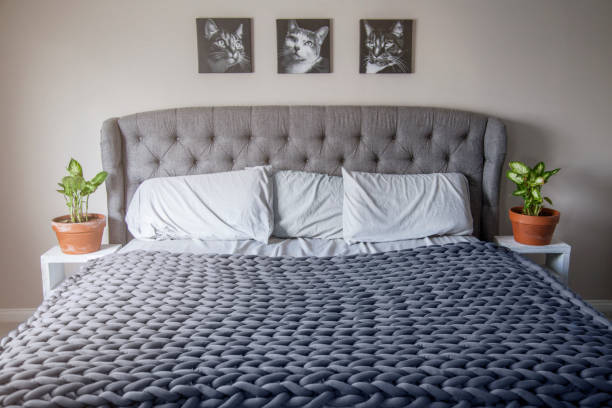
Embrace the Weighted Blanket Experience
The advantages of making a weighted blanket are multifaceted and can greatly enhance your quality of life. These blankets offer numerous benefits, including improved sleep quality, reduced anxiety and stress, and a sense of comfort and security.
By customizing the weight and design of your blanket, you can create a therapeutic tool tailored to your specific needs and preferences.
Furthermore, the process of making a weighted blanket can be a rewarding and creative endeavor. It allows you to exercise your craftiness and personalize your blanket with fabrics and patterns that resonate with you.
Whether you're an experienced seamstress or a beginner looking for a DIY project, crafting a weighted blanket can be a fulfilling and enjoyable experience.
So, don't hesitate to explore DIY weighted blanket projects and reap the benefits of a cozy, calming, and comforting addition to your life.
Whether you're seeking better sleep, relief from anxiety, or simply a warm and snug companion on chilly nights, a homemade weighted blanket can be a valuable addition to your daily routine.
Get started on your weighted blanket journey, and discover the soothing embrace of a custom-made blanket designed to cater to your unique well-being needs!


